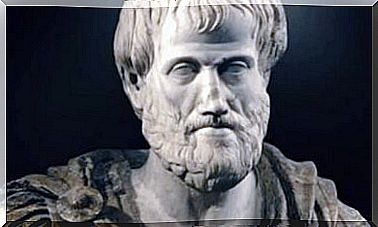3 Techniques For Public Speaking

Therapeutic programs focused on the acquisition of public speaking skills and the loss of stage fright are developed based on several factors that are best worked together. The anxiety response is usually the most common. These programs work on the physiological, cognitive and motor aspects. They do this through deep breathing, self-instruction training, and the development of verbal, non-verbal and vocal skills.
Both deep breathing training and self-instruction are exposure techniques for the motor component. Breathing techniques help to counteract the effect of anxiety and also to facilitate speech. Self-instruction techniques consist of introducing changes in self-verbalizations.
In this way the level of self-control is increased and the behavior becomes more adaptive. The third technique focuses on developing verbal skills that increase self-confidence and confidence.
Controlled breathing
It is convenient to train and handle diaphragmatic breathing with ease. It is a type of breathing that, in addition to helping to reduce the level of anxiety, gives the speaker a greater reserve of air while speaking and allows him to reach his voice further. This in turn gives you greater self-confidence. Chest breathing (up to the lungs) increases the stress level. On the contrary, breathing with the diaphragm favors the parasympathetic response and helps relaxation.
This diaphragmatic breathing, also called deep breathing, brings more air into the lower lungs. This area is the one with the most capacity, in such a way that breathing from that area guarantees better oxygenation and lung cleansing. It is not a difficult technique, although it should be properly trained with a specialized therapist so as not to make mistakes and get the most out of it.

Meichenbaum Self-Instruction Training
The main idea of this method is the gradual introduction of self-verbalizations, internal verbalizations, thoughts and self-instructions. This change in internal dialogue is what influences the individual and ends up modifying their behavior. This method was created in the 1960s by Dr. Donald Meichenbaum for aggressive and hyperactive children. To shape it, he relied on studies by Vygotsky and Piaget on the importance of language to control motor behavior. Although it has turned out to be a method whose techniques are very positive in solving problems in general.
In the case of fear of public speaking, these techniques have been shown to be a valuable aid in overcoming stage fright. By shaping thoughts through self-verbalizations, we are able to modify internal dialogue and control behavior.
This method consists of five phases. In the first two the therapist acts as a role model, in the other three phases it is the individual who practices the self-instructions, first out loud, then in a very low voice (masked) and finally the self-verbalizations become thoughts or covert self-instructions.
Verbal, non-verbal and vocal skills for public speaking
Training to speak in public requires the management of the appropriate linguistic resources, as well as a good structure of the ideas to be presented and an adequate register of the language to be used. Training these points gives the speaker self-confidence and security.
In the same way, non-verbal language says almost as much as the previous one. From facial expression to body movements, eye contact and the management of physical spaces. Good body language training is essential when developing public speaking skills.

The vocal elements, learning to handle the voice, is another of the key points. It is so important that the human being tends unconsciously to relate the voice to the personality type.
The most important vocal elements to work on are voice, tone, emphasis, speed, rhythm, projection and resonance. The voice is the one that reaffirms or destroys the first image of a speaker. It is very important that both the verbal and non-verbal elements and the voice are in harmony and reflect balance. As in almost everything, the important thing is that, in the end, what is seen, what is said and what is maintained on a balance of coherence.









